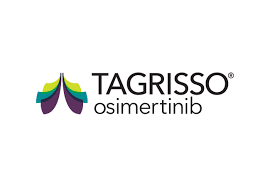In the realm of cancer treatment, especially for non-small cell lung cancer (NSCLC), Tagrisso (osimertinib) has emerged as a beacon of hope. It’s a targeted therapy known as a tyrosine kinase inhibitor, specifically designed to tackle tumors with certain mutations in the epidermal growth factor receptor (EGFR) gene. When patients first start taking Tagrisso, it often delivers remarkable results, shrinking tumors and extending life expectancy. However, as with many medications, there may come a point when Tagrisso stops working effectively. Understanding why and what happens next is crucial for patients and their healthcare providers.
Mechanisms of Resistance
The efficacy of Tagrisso can diminish over time due to the development of resistance mechanisms within the cancer cells. One common mechanism is the emergence of secondary mutations in the EGFR gene, rendering Tagrisso less effective in inhibiting tumor growth. Additionally, cancer cells can activate alternative signaling pathways, bypassing the EGFR pathway altogether and allowing the tumor to proliferate despite treatment with Tagrisso.

Clinical Implications
When Tagrisso stops working, it presents a significant challenge for both patients and oncologists. Clinically, this often means disease progression, evidenced by tumor growth or the appearance of new lesions on imaging scans. For patients who have experienced substantial benefits from Tagrisso, this transition can be emotionally distressing and may lead to feelings of uncertainty about future treatment options.
Treatment Strategies After Tagrisso Resistance
Fortunately, there are several strategies available for patients who have developed resistance to Tagrisso. One approach involves switching to another EGFR tyrosine kinase inhibitor, such as afatinib or dacomitinib, which may still be effective against certain EGFR mutations. Alternatively, combination therapies involving EGFR inhibitors and other targeted agents or immunotherapies are being investigated in clinical trials and may offer promising results.
The Importance of Molecular Testing
In the era of precision medicine, molecular testing of tumor tissue is paramount for guiding treatment decisions after Tagrisso resistance. Comprehensive genomic profiling can identify specific mutations or alterations in the cancer cells, enabling oncologists to select the most appropriate targeted therapy or clinical trial for each individual patient. Additionally, liquid biopsy techniques, which analyze circulating tumor DNA in the blood, provide a non-invasive means of monitoring disease progression and identifying potential resistance mechanisms.
Supportive Care and Patient Education
Beyond medical interventions, it’s essential to provide comprehensive supportive care for patients facing Tagrisso resistance. This includes addressing symptoms such as pain, fatigue, and shortness of breath, as well as offering psychosocial support and resources to help patients cope with the emotional impact of their diagnosis. Patient education is also crucial, ensuring that individuals understand their treatment options, potential side effects, and how to advocate for their own care.
Conclusion
In conclusion, while Tagrisso has revolutionized the treatment landscape for EGFR-mutated NSCLC, its effectiveness may wane over time due to the development of resistance mechanisms. Understanding why Tagrisso stops working and knowing the available treatment strategies is essential for optimizing patient outcomes. By embracing precision medicine approaches, conducting molecular testing, and providing comprehensive supportive care, oncologists can continue to make meaningful strides in the management of advanced lung cancer.
